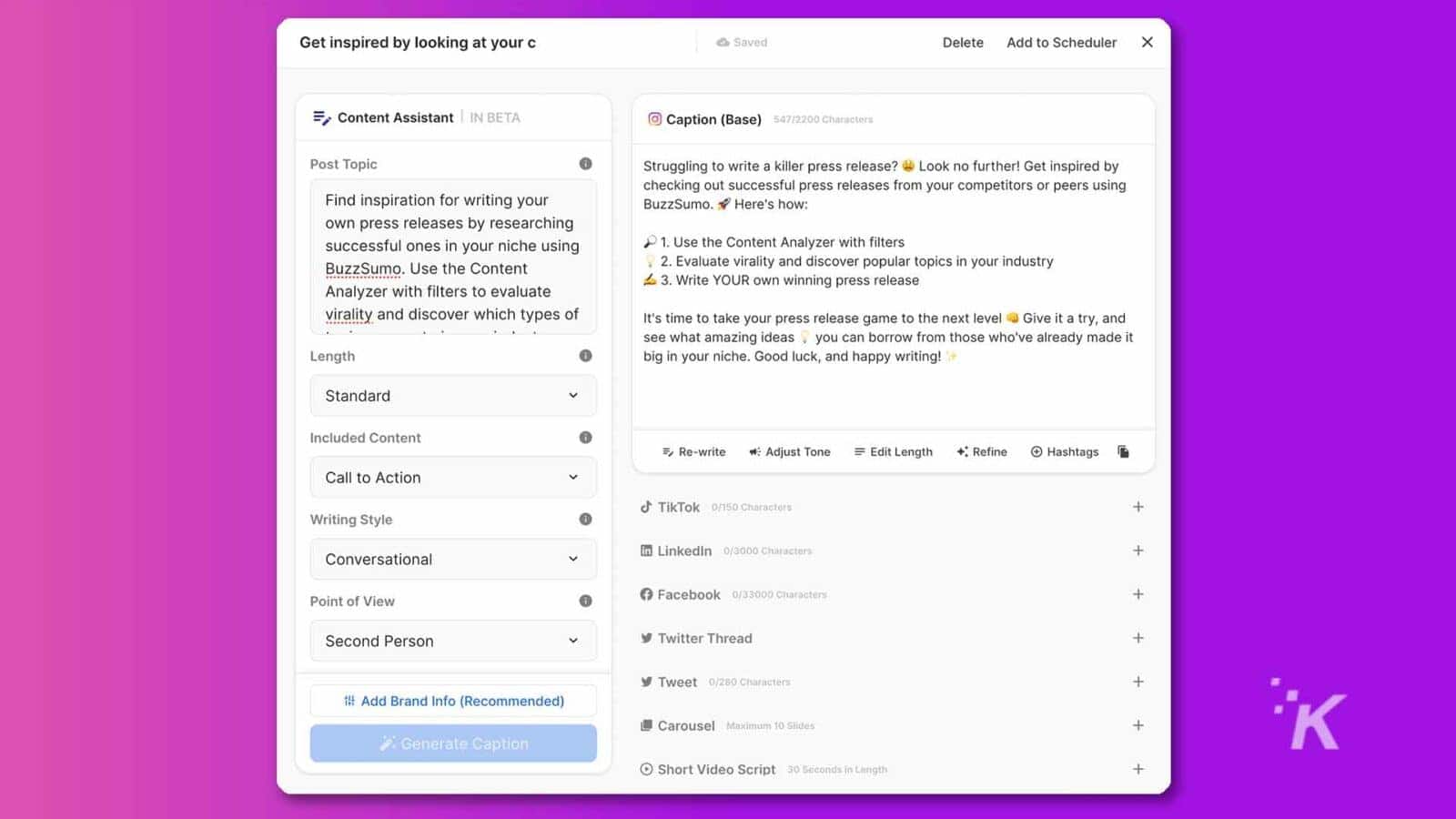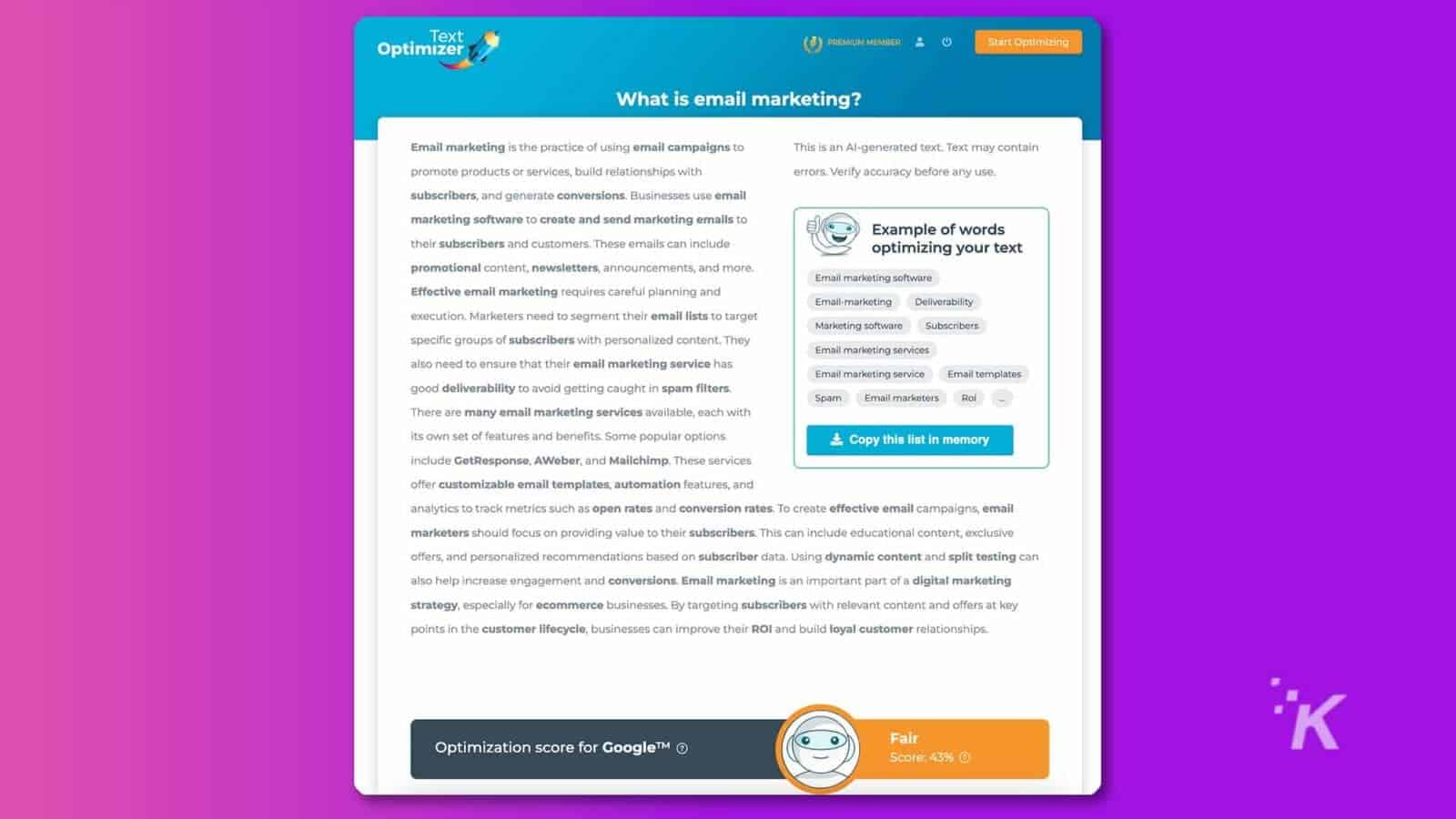Business
5 ways your nonprofit can rock social content marketing
This guide will show you how to best utilize social media for marketing your nonprofit.

Just a heads up, if you buy something through our links, we may get a small share of the sale. It’s one of the ways we keep the lights on here. Click here for more.
Social media is a fantastic tool to raise awareness and tell your story. And that is exactly what most nonprofits need. Here’s how to utilize social media for marketing your nonprofit.
Document your strategy
Documentation is the best way to get everyone in your organization on the same page.
Content marketing should not be siloed in one department because a successful strategy crosses departments, and folks from different areas should take on different assignments.
You may wish to include development staff, marketing staff, executive management, volunteer coordinators, and program staff (e.g., ask your folks in the field to make quick videos with smartphones, then tweet them to major donors).
Here are some of the things to come to a consensus on; then write down:
- What is the tone, style, and voice of your content? Will this be different on different platforms (perhaps based on the demographics of your supporters who use different media)?
- How will content deliverables be produced; who will be responsible?
- How often will deliverables be produced/distributed?
- Who will be responsible for follow-up/engaging with constituents?
- What process will you use to evaluate engagement, and who will be responsible?
Budget for your content marketing

It obviously makes little sense to spend time documenting a content marketing strategy if you don’t have the resources to act on it. So it’s imperative to allocate a budget for this endeavor.
First and foremost, of course, you need staff. If you can’t hire who you need, consider outsourcing. In any regard, there are other areas to consider setting aside a budget for:
- Search engine optimization (for small to medium sites, this can be handled by an SEO content helper tool)
- Analytics and tracking tools
- Print or other offline promotion
- Social media ads (e.g., Facebook; Linkedin)
- Content discovery tools
- Native advertising
- Online banner ads
While many nonprofits get queasy at the thought of allocating funds for advertising, you do have to spend money to make money.
If you distribute your content in such a manner that it engages the right audiences and drives important leads, then it’s penny-wise and pound-foolish not to do so.
There are plenty of free and affordable tools to help. Canva (here’s more on Canva pricing) and Agorapulse (which starts at $49 a month) are just two examples.
Just start small. Test and analyze the platforms you’re considering using before launching a full-fledged campaign.
Earmarking resources to track and determine which channels drive the most traffic accurately and which types of content generate the greatest engagement and influence the largest donations should be more of a no-brainer.
You want to be able to assess where new leads come from and what type of engagement you get from these leads. Social media metrics you may wish to track include:
- Referral traffic (the most desired type of traffic because referred visitors are already interested in what you have to offer; easy to track if you use Google Analytics)
- Click rate on social shares (easily generate more clicks by adding share buttons not just to your website’s home page but landing pages, subpages, images, videos, and any form of content you can think of)
- Most popular content (easy to track if you use Google Analytics)
Artificial intelligence makes marketing even more affordable by handling easy and repetitive tasks and allowing businesses to allocate resources elsewhere. For example, tools like Flick utilize AI to write social media captions for you:

Another useful tool, Text Optimizer, combines semantic analysis with AI to create highly optimized copy for you to use when syndicating content:

Tell better, more frequent stories
It turns out that human beings are wired for stories. It’s the oldest form of human communication. It’s how we make sense of our world and our place in it. What a perfect vehicle for talking about how to make the world a better place!
Stories are the easiest way to solve your content marketing challenges. It turns out that social media is an optimal mechanism for spreading stories because a basic feature of stories is the telling and re-telling.
A great way to do this is the widespread technique popularized in the 19th century when books were premium items, and installment literature was the way to bring it to the masses.
This is how authors like Charles Dickens and Alexander Dumas got their start, and later on, Harriet Beecher Stowe, Henry James, and Herman Melville.
It’s one reason that when they were made into books, these novels were so long (writers were paid by the line and the episode).
Serial storytelling works because each episode is easy to digest. And folks welcome your content as you continue to tell the story or let it unfold.
Then, if you’re lucky, they’ll share the story with their networks. Your story will then self-replicate as it’s passed from one listener to the next.
Develop an influencer strategy

One of the best ways to turn your content viral — and spread it beyond your current supporters –is through the use of influencers. And these folks don’t need to be Hollywood or sports celebrities.
You want to find folks who care about your cause, have large online networks, and who may be likely to share your content.
Who are your likely influencers? Think about who might have brand affinity for your cause, then begin to develop relationships with these folks.
Share your content in more places
In our digitally revolutionized society, inbound marketing is the best way to turn strangers into supporters.
Inbound marketing means that once you’ve created great content that aligns with your constituencies’ values and will naturally pull folks toward your organization and mission, you then publish that content with your constituents’ habits in mind.
You go where they are. You engage with them in a manner in which they’d like to be engaged. The places you share your content matter. A lot.
To maximize your chances of reaching folks by using multiple social media platforms. If you want to raise more money, you can’t silo your marketing and your fundraising efforts.
They’ve got to work together seamlessly if you have a dream… a vision… values… a mission you want to spread. Understand that from the outside looking in; you are ONE organization.
No one cares which department created or implemented which strategy. They want value and consistency.
Have any thoughts on this? Drop us a line below in the comments, or carry the discussion to our Twitter or Facebook.
Editors’ Recommendations:
- Creating a social media marketing growth strategy
- The art of growing your social media following
- How you can leverage AI to aid your marketing efforts
- Five social channels under-utilized by businesses



























